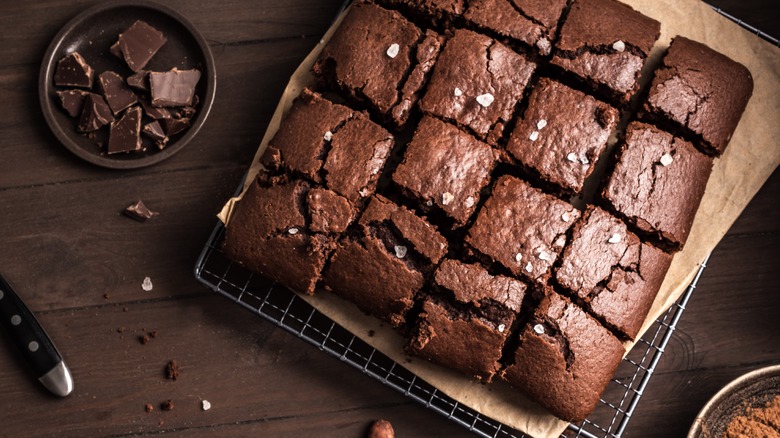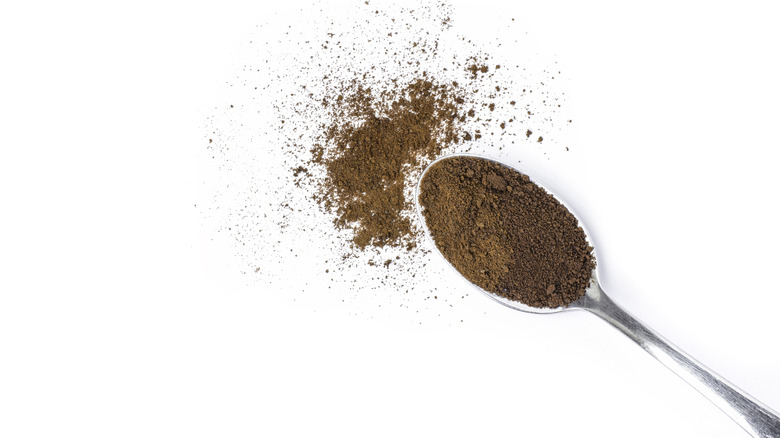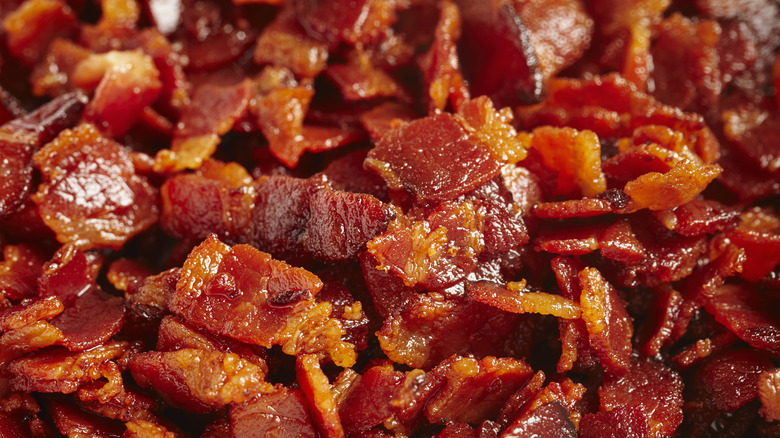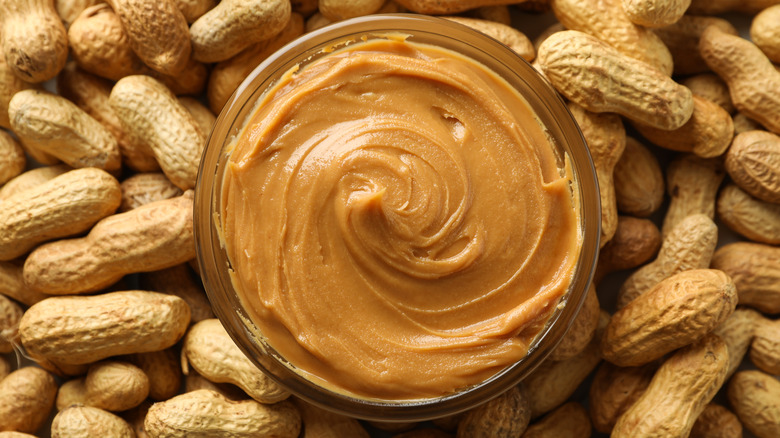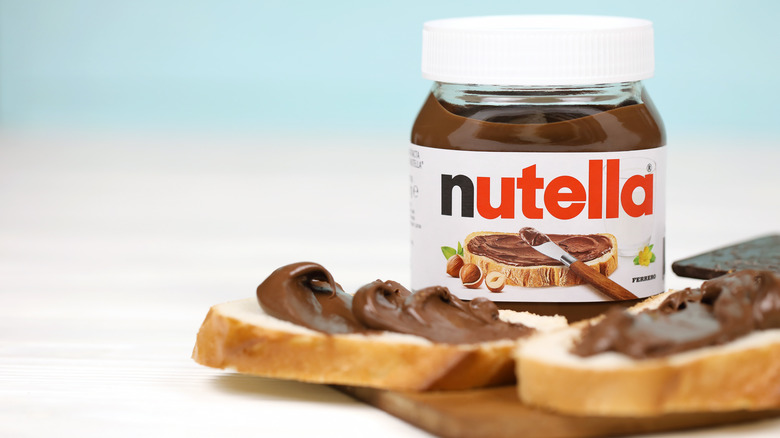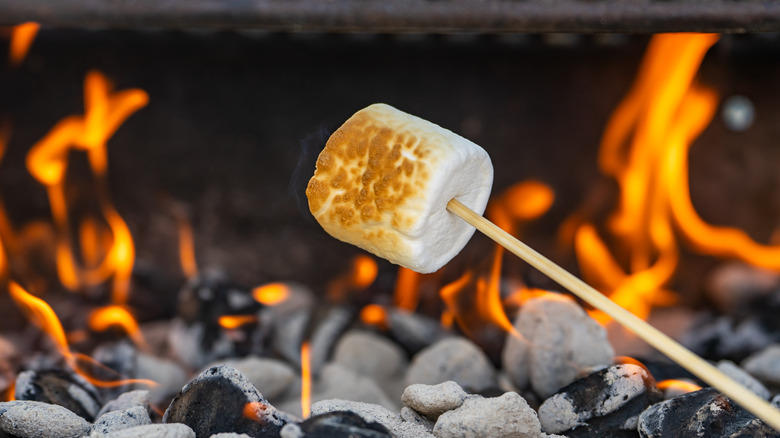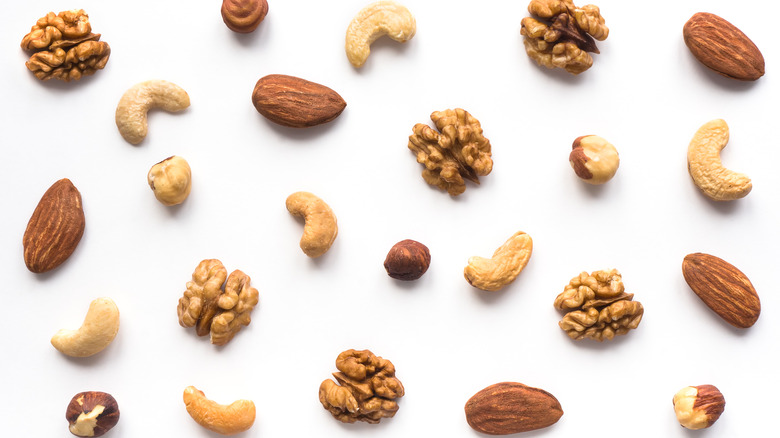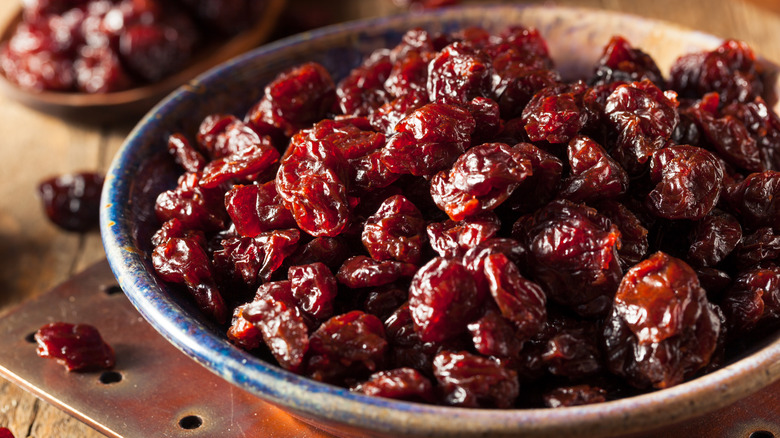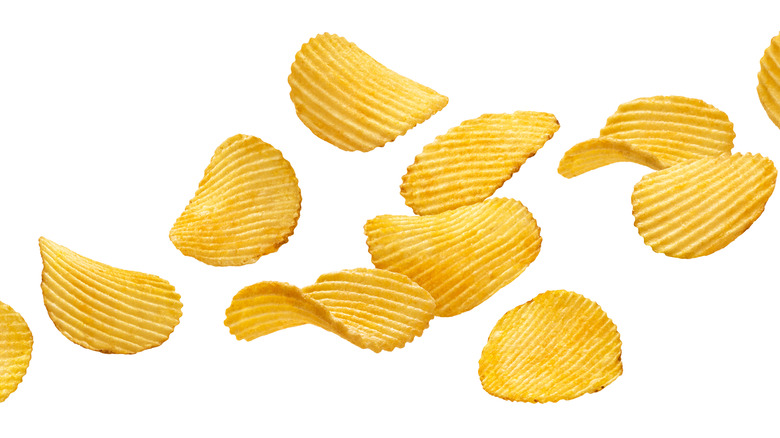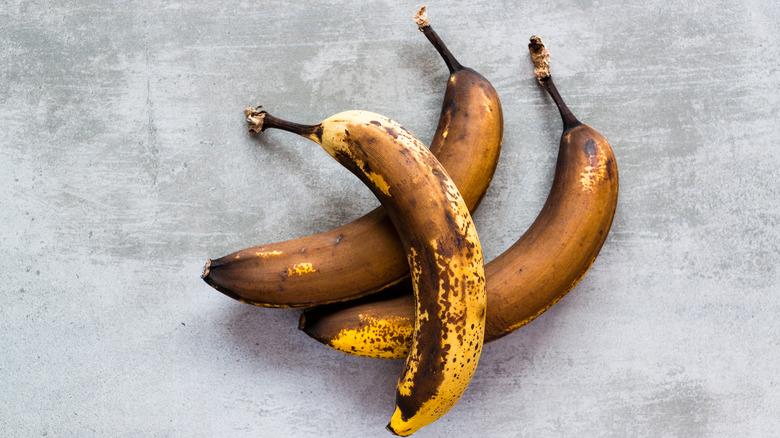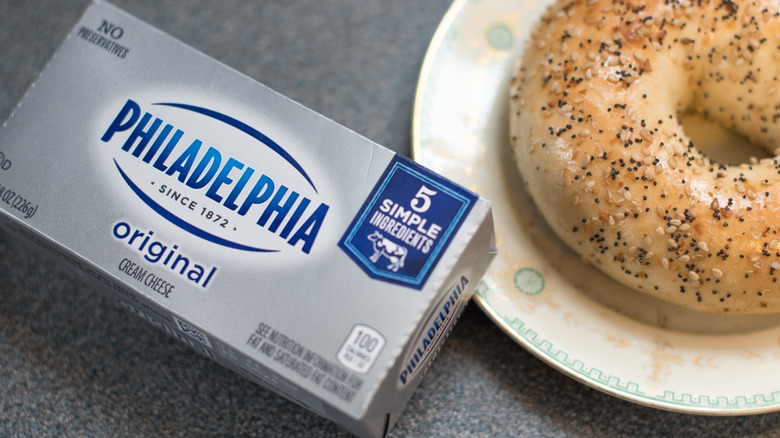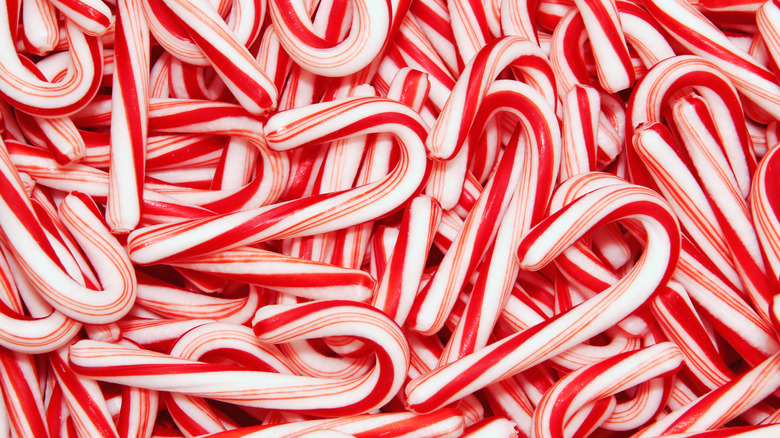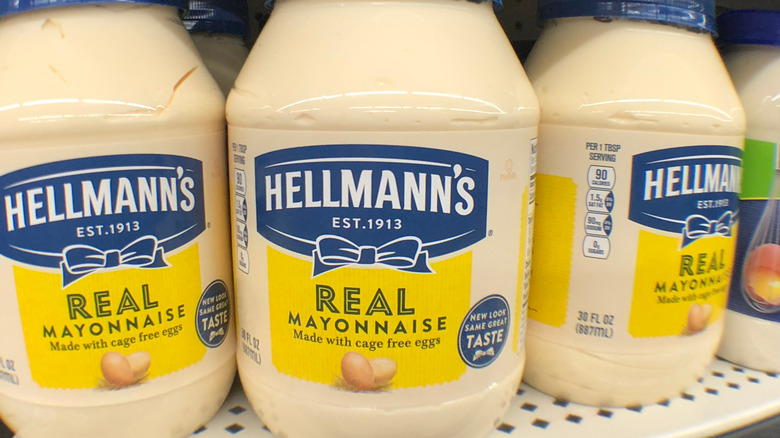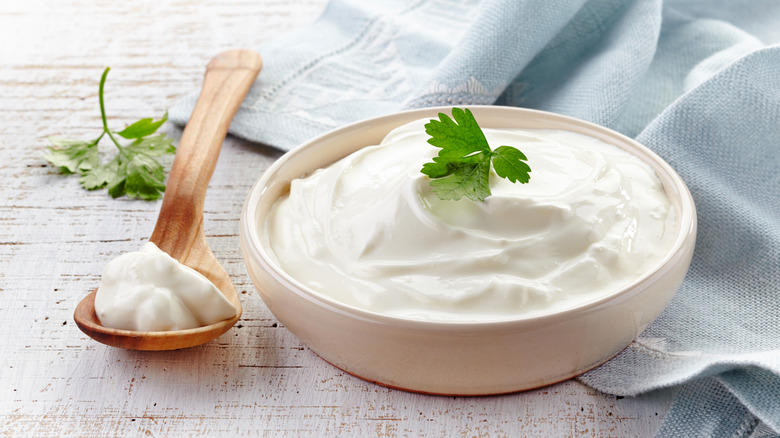Delicious Ingredients You Should Be Adding To Your Brownies
The brownie is as quintessentially American as apple pie. Its origins date back to 1893 and the Columbian Exposition of Chicago (via Forbes). This event was intended to commemorate the 400th anniversary of the Mayflower landing in the U.S. and to celebrate Chicago's renaissance after the Great Chicago Fire of 1871. Among the novelties introduced at the exposition were the Ferris wheel, moving walkways, Juicy Fruit gum, Pabst beer, and the brownie.
This brownie was commissioned by magnate and leader of the Board of Lady Managers for the exposition, Bertha Palmer. Palmer asked the chef of the illustrious Palmer House hotel to create a portable confection that could be placed into lunch boxes to be distributed at the Women's Pavilion. What they produced was the first example of a sweet chocolate cake-like brownie and it became a hit. A version of the original recipe can still be sampled at the Palmer House for a bit of nostalgia.
Per U.S. History Scene, the original specimen was adorned with walnuts and an apricot glaze. Subsequent iterations of the brownie made their way into cookbooks like the 1904 Service Club of Chicago cookbook, as well as Fannie Farmer's 1906 classic. Each placed their own twist on the confection, highlighting the potential variations that could be made to the simple dessert. Whether you prefer a cakey or a fudgy brownie — here is a list of ingredients you should definitely be adding to your own favorite recipe.
Coffee
What could possibly make your brownies more chocolatey than adding more chocolate? Coffee. We can hear you saying to yourself, "But I don't like the flavor of coffee." Fear not — as America's Test Kitchen notes — the point of adding the coffee isn't to make your brownies taste like coffee. Something about the combination of chocolate with coffee accentuates the flavor of the chocolate. We know it sounds counterintuitive, but it really does work.
The key is to use the right kind of coffee, namely espresso powder, and not just ground coffee. Its extra fine grind ensures that it blends in seamlessly with your batter without leaving an unappealing mouthfeel (the way regular coffee grinds would) or too aggressive a coffee flavor (the way brewed coffee might). If you don't have espresso powder, you can try instant coffee as a substitute. Keep in mind that a little goes a long way. For every recipe using a 9x13-inch baking pan, only use 1½ teaspoons of espresso powder or 3 teaspoons maximum of instant coffee granules. That's quite literally the sweet spot for the perfect chocolatey brownie flavor.
Bacon
We already know that bacon makes everything better — even desserts. Bacon in a brownie? Over the top. And if it's good enough for Nigella Lawson, it's good enough for us. The best way we can describe these brownies is decadent. Regardless of what recipe you use for your brownies, the key is to buy what Lawson calls classic American-style bacon, or streaky bacon. It should be thinly sliced — as opposed to thick-cut — and then chopped into small pieces using kitchen shears. The bacon bits can then be cooked in a frying pan until the fat has rendered out and they are crispy. These salty-bites of heaven are subsequently folded into the brownie batter and baked accordingly. The combination of sweet and savory, with that tiny crunch of umami-laden bacon throughout, is sure to make your mouth water.
One quick note about storing these brownies. Because of the bacon, the brownies should be cooled and immediately transferred into an airtight container within two hours of baking. They will last in the refrigerator for no more than three days, or can be frozen for as long as one month.
Peanut butter
If you love a Reese's Peanut Butter Cup, a peanut butter brownie is a no brainer. Aside from deciding on smooth versus chunky peanut butter — which is a matter of taste — there are a few things to keep in mind when adding peanut butter to your brownie recipe. Thrifty Jinxy notes that it can create a thicker, heavier brownie if added straight into the batter. For this reason, the peanut butter should be substituted for a portion of the oil in the recipe. The ratio recommended is half peanut butter to half the oil.
MasterClass offers other alternatives to getting that sweet and savory pop of chocolate and peanut butter together. Peanut butter chips are a quick and easy method, although the chips can easily settle to the bottom of the batter if not carefully incorporated. Another method is to alternate the batter with a blanket of spoonfuls of peanut butter before topping it with the remaining batter, creating a brownie peanut butter sandwich situation when baked. A third suggestion is to incorporate some softened peanut butter into the top of the brownies before baking by using a skewer to swish it around for a crunchy (or cream) peanut butter topping. Lastly, you can whip up a peanut butter frosting to adorn your baked and cooled brownies after they come out of the oven. Whichever method you choose, you won't be disappointed.
Nutella
Nutella is a chocolate hazelnut spread that has its origins in post-World War II Italy. After the war, cocoa was hard to come by. According to Italy Heritage, pastry chef Pietro Ferrero decided to combine some sugar, cocoa, and hazelnuts to create a paste that could be put on bread. The predecessor to the modern-day spread became an instant hit. After undergoing numerous iterations, the current delicacy debuted on April 20, 1964. It has since become a worldwide phenomenon with consumers all across the globe.
The idea of adding Nutella to a brownie is a natural progression to the evolution of this sweet treat. This recipe that appears on Today is more like a sponge-cake than a brownie per se. The melted Nutella is added to eggs that have been whipped into a thick meringue before being baked until just barely set. Once cooled, the result is a gooey fudgy treat that also happens to be both gluten and dairy-free.
Marshmallows
S'mores conjure memories of sitting by a campfire with marshmallows on the ends of wire hangers (or branches) melting to unctuous perfection before being snuggled between two graham crackers lined with chocolate. The slightly burnt sugar flavor of marshmallow paired with the slowly softening chocolate is something that first makes an appearance in a Girl Scouts of America guidebook in 1927, per History Daily. The book entitled "Tramping and Trailing with the Girl Scouts" is a compilation of recipes that are ideally suited for preparation while out camping. As the name suggests, you'll be craving "some more" of these treats after eating them.
If you are wondering how you can capture the fun and frivolity of the campfire at home, consider a marshmallow brownie. Appropriately named company, Campfire Marshmallows, have a recipe that is sure to transport you back to the wild. The marshmallows melt into the brownie batter creating an almost reverse texture of the chocolate engulfing them, and the addition of butterscotch helps to enhance that caramelized sugar flavor so quintessential to the real deal.
Nuts
Nuts in baked goods, from carrot cake to banana bread to brownies, are sure to spark heated debate. Ours is a house divided where nuts are concerned. So why do so many recipes call for them? Nigella Lawson notes that nuts are instrumental in creating a depth of texture in her legendary brownie recipe, but adds that you can simply eliminate them if you are either allergic or don't like them. However — rather than eliminating them — try a substitution.
Higher Edukitchen provides a guideline for the top best nuts to use in baking. While walnuts tend to be the most common in baked goods, they can be slightly bitter, causing a lot of folks to dislike them. Pecans and hazelnuts would be the closest substitutes in terms of underlying flavor. Additional options include: almonds, peanuts, cashews, pistachios, and macadamia nuts. A basic rule to consider when baking with nuts is to toast your nuts before using them to draw out the natural oils, thus enhancing their flavor. Additionally, most recipes will call for the nuts to be chopped prior to adding them. This can be accomplished by either using a food processor or a knife. For brownies, the ideal size chop is typically ⅛ inch in size.
Dried fruit
Using dried fruit in baking isn't exactly a novelty. Fruitcake anyone? It is a great go-to both nutritionally and for culinary purposes (via University of Wyoming). From a nutritional perspective, dried fruit is extremely rich in fiber, dense in carbohydrates, and not a high source of fat. Because they are desiccated fruit, they do tend to be high in calories, but adding them strategically to your recipes won't cause a negative impact. Strictly speaking, from a culinary perspective, dried fruits can add a hint of moisture (go figure), a chewy texture, and a pop of extra flavor in your baked items — something that is ideal when it comes to making your brownies special.
Our favorite dried fruit add-ins for brownies include sweeter fruits — like dried apricots and dried cherries — both of which are uniquely perfect complements to chocolate, as is evidenced by this rich Cherry and White Chocolate Brownie recipe from Ghirardelli. If a recipe requires chopped dried fruit, the University of Wyoming suggests freezing the fruit for an hour to make it less unruly to handle. Then you can either chop the fruit with your favorite butcher knife or use kitchen shears to process them. As with almost any add-in, tossing the dried fruit with a bit of flour before incorporating it into your brownie batter will ensure that the fruit stays evenly distributed throughout the final product, rather than settled to the bottom of it.
Potato chips
Have you ever had a chocolate covered potato chip? The salty, crunchy potato chip coated in sweet chocolate is mouth-watering. Now, imagine this combination in reverse — namely, potato chips in a fudgy brownie. Apparently, the folks over at the Food Network are obsessed with this combo. Recipes exist from the likes of Rachel Ray to Ree Drummond to Trisha Yearwood. The thing that they all say makes this a winner is the contrast in both flavors and textures.
A crunchy, salty bite atop a rich chocolate brownie is sure to make even your pickiest eater happy. And the Pioneer Woman herself, Ree Drummond, swears that this is one of the best tools in her arsenal to doctor up a store-bought brownie mix in a pinch. Just make sure you select a potato chip that is ribbed rather than flat. They will do a better job of maintaining their texture than a flat potato chip, which can easily disintegrate into the brownie batter.
Bananas
Ripe-bananas are not an uncommon ingredient in baked goods — hello banana bread. There's a reason for this. According to NorthShore University HealthSystem, bananas are a great source of moisture, keeping baked goods pliable. They also can be a great substitute for some of the fat in a recipe. Their rule of thumb is that mashed banana can be used for half the fat, which can definitely reduce the amount of saturated fat in baked goods. And per Harvard School of Public Health, bananas are a nutritional powerhouse, replete with vitamin B6, loads of fiber, potassium, magnesium, vitamin C, and magnesium.
When added to a chocolate banana brownies, the dark chocolate is perfectly complemented by the banana-flavor. And what better way to sneak in a serving of fresh fruit into your children's diet than by hiding it in a brownie? But how do you know if your banana is ripe enough to bake with? King Arthur Baking Company says it should be black — or at least a dark brown. Their rule of thumb is "the darker the better," although, if you notice they are starting to get moldy, that's a little too far gone. They also recommend taking over-ripe bananas and putting them in the freezer to save for a later date, which is a great way of not wasting those bananas if you don't have the time to use them right away.
Cream cheese
We think two desserts are better than one. If cheesecake and brownies are your jam, putting cream cheese in a brownie is certain to titillate your taste buds. The key element here is the juxtaposition of the sweet brownie batter with the slightly-sour cream cheese. That acidity tempers the sweetness of the chocolate just perfectly. The Pioneer Woman, Ree Drummond, agrees. In her estimation, it's important to opt for a fudgy versus cakey brownie batter for this cheesecake brownie mash-up.
Her trick to incorporating the cream cheese more efficiently into the brownie batter is to freeze the batter for 10 minutes prior to adding the whipped cream cheese frosting. She then suggests swishing the cream cheese into the brownie batter using a sharp object — like a skewer or a paring knife. These brownies must be refrigerated after baking because of the presence of the cream cheese in the recipe. They will keep for about three days in a sealed storage receptacle — although, they're so tasty, we'd be surprised if they even last that long.
Peppermint
Nothing screams the holidays quite like the flavor of peppermint. From peppermint lattes to peppermint bark to peppermint laced spiked eggnog — peppermint shows up virtually everywhere from Thanksgiving to Christmas. This is no less true for the illustrious brownie, which actually does highlight the flavor of peppermint brilliantly. But where does this tradition come from?
Foodiosity suggests that, according to a German folktale, candy canes were fed to children in Germany during the 17th century to occupy them while Christmas mass was being conducted. Other legends claim the bend in the candy cane was designed to resemble the shepherd's crook in the Nativity scene. And yet, further lore indicates that the colors of white and red are symbolic of the immaculacy of Christ and his ultimate sacrifice for humanity. Whichever version of candy cane history you believe, the flavor of peppermint is not only ideal in terms of freshening one's breath during holiday gatherings, it can also soothe an upset stomach after over-indulging.
Mayonnaise
While using mayo in baking may sound a bit peculiar, the tradition dates back to the Great Depression when common baking ingredients — like eggs and sugar — were either hard to come by or cost prohibitive, per Newshub. Not only are the brownies moist, they are decidedly delicious. The secret lies in the unique make-up of classic mayonnaise — namely oil, vinegar, and egg. Oil makes the brownies more supple, the eggs keep the brownies gooey, and the vinegar amplifies the flavor of the chocolate. And don't worry, the finished product doesn't have a distinctive mayonnaise taste to it in spite of the fact that it utilizes ½ cup of the creamy condiment.
Fun fact: mayonnaise wasn't always as readily available as it is now. Prior to 1920, mayonnaise was most commonly found in fine dining establishments like the legendary Delmonico's steakhouse. It wasn't until Hellmann's began jarring it in bulk and marketing it en masse that it became a staple in virtually every household. Now, many consider Hellmann's the best mayonnaise of them all.
Sour cream
Ever wonder what to do with that container of sour cream that has been sitting in the back of your refrigerator since your last taco night? We have just the trick for you. Believe it or not, adding sour cream to brownies and other baked goods is not just a great way to use up ingredients, but it actually makes good culinary sense. The secret is in the way sour cream is made.
Lactic acid is incorporated into cow's milk to ferment it. Unlike other acids that would curdle the milk, the lactic acid produces bacteria that imparts a slight sour flavor, while maintaining a luscious silky texture. Adding just ½ cup of this magic ingredient to any baked item is sure to improve the mouthfeel of the finished product, without impacting the baking time in any way. One slight word of caution: if there is any sign of mold in your container of sour cream, throw it away. Unlike hard cheeses — where you can simply cut off the moldy part of the block and use the rest — sour cream that is moldy is considered to be spoiled.
